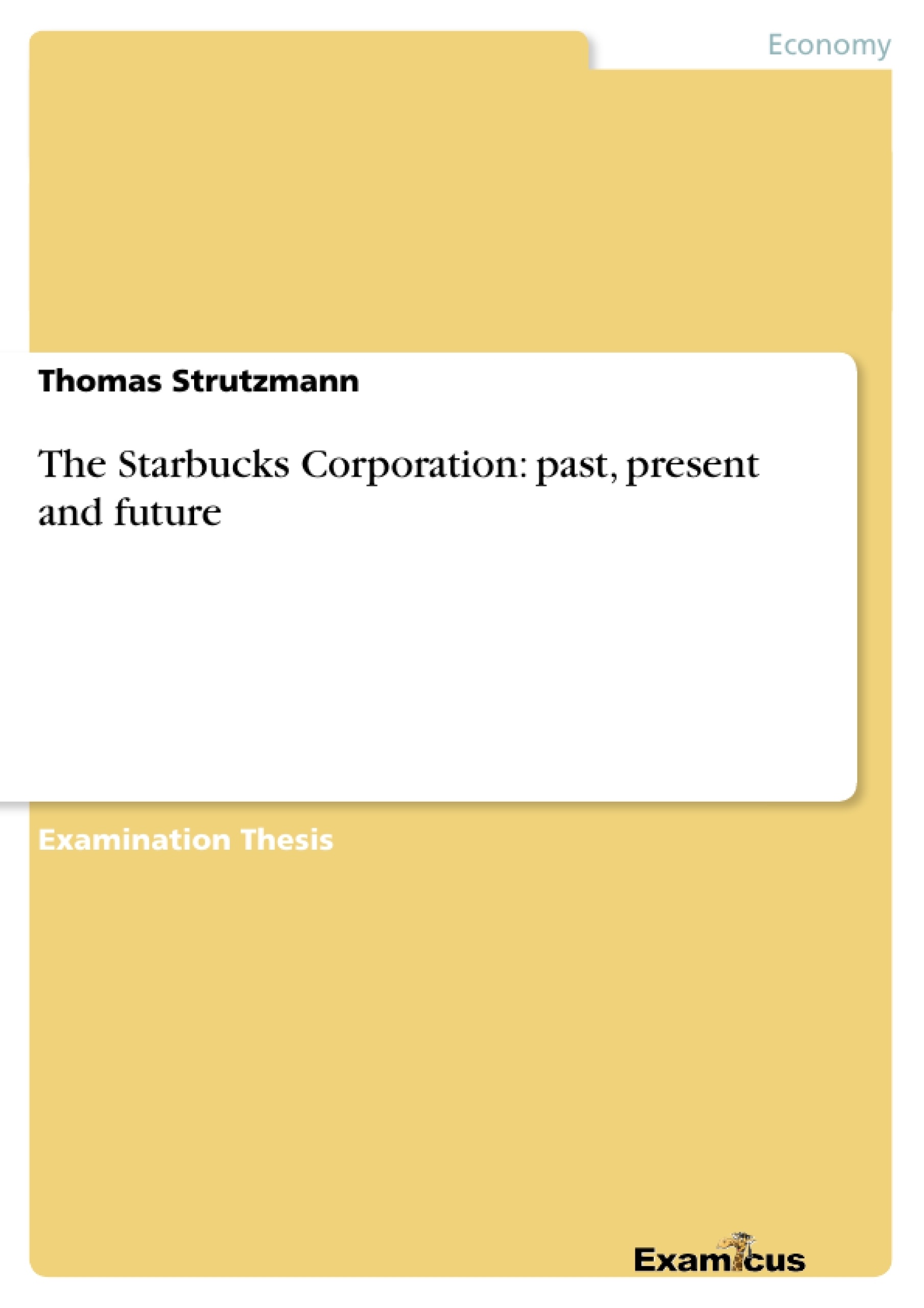What were the main reasons for Starbucks success?
Mistakes which other companies did - and Starbucks not:
-companies didn?t rise enough money to finance growth
-companies franchised too early and too widely
-companies lost control of quality
-companies didn?t invest in systems and processes
-companies hired inexperienced people or the wrong
people
-companies were so eager to grow that they picked the
wrong real estate locations.
-companies didn?t have the discipline to walk away from a
site if they couldn?t make the economics work.
-All of them lost money, they didn?t use their years of
losses to build a strong foundation for growth.
You can?t create a world-class enterprise without investing it.
Table of Contents
- Background
- Mail order
- Growing strategy
- “Flavorlock”- bags
- People
- Going public
- Growing in U.S. and International
- Connecting with the customer
- Key Development
- Suppliers as Partners
- Situational Analysis
- SWOT Analysis
- Recommendation Analysis
- Coffee Tree - Starbucks Company Tree
- Financial Highlights
- Stores opened at year end 2004:
- The Coffee Industry
- STARBUCKS BUSINESS SUMMARY
- The firm's value chain:
- Starbuck Haters
- Summary
- Future
- Annex:
- Picture Index
- Literature List
Objectives and Key Themes
This research paper examines the Starbucks Corporation, delving into its past, present, and future prospects. It analyzes the key factors behind the company's remarkable growth and success. The paper highlights the company's strategic decisions, organizational structure, and its approach to customer relationships, supplier partnerships, and international expansion. The key themes explored in the paper include:- Starbucks' unique business model and its evolution
- The importance of customer experience and brand building
- The company's approach to employee relations and its "partner" model
- Starbucks' strategic expansion in the United States and internationally
- The role of innovation and technology in the company's growth
Chapter Summaries
Background
This chapter introduces the origins of Starbucks, tracing its roots back to its founding in 1971 by three Seattle entrepreneurs. The chapter also introduces Howard Schultz and his pivotal role in shaping the company's vision and direction.Mail order
This chapter explores Starbucks' early foray into mail order, detailing its efforts to reach a wider customer base through catalogs and direct marketing.Growing strategy
This chapter examines Starbucks' strategic growth initiatives, focusing on its efforts to attract institutional investors, build a strong management team, and expand its retail presence.“Flavorlock”- bags
This chapter discusses Starbucks' innovative use of “Flavorlock”- bags, a packaging method that allowed the company to maintain coffee freshness during its expansion.People
This chapter highlights Starbucks' commitment to its employees, showcasing its unique approach to employee benefits, employee stock ownership programs, and the creation of a strong corporate culture.Going public
This chapter describes Starbucks' successful initial public offering (IPO) in 1992 and its subsequent expansion into new markets.Growing in U.S. and International
This chapter explores Starbucks' continued expansion in the United States and its strategic entry into international markets, including its approach to joint ventures and strategic alliances.Connecting with the customer
This chapter examines Starbucks' customer-centric approach, highlighting its focus on delivering a unique coffeehouse experience, building strong customer relationships, and implementing strategies to drive customer loyalty.Key Development
This chapter highlights significant developments in Starbucks' growth, including price increases, leadership transitions, and the company's foray into new areas such as music and wireless services.Suppliers as Partners
This chapter delves into Starbucks' approach to supplier relationships, emphasizing its commitment to long-term partnerships, quality, and mutually beneficial collaborations.Situational Analysis
This chapter analyzes Starbucks' business strategy, corporate strategy, retail store strategy, and its structure and control systems.SWOT Analysis
This chapter conducts a SWOT analysis of Starbucks, identifying its strengths, weaknesses, opportunities, and threats.Recommendation Analysis
This chapter provides recommendations for Starbucks' future growth based on the analysis of its past performance and current market dynamics.Coffee Tree - Starbucks Company Tree
This chapter presents a visual representation of Starbucks' company structure, showcasing its commitment to ethical sourcing, community engagement, and environmental sustainability.Financial Highlights
This chapter presents key financial highlights of Starbucks, including net revenues, net earnings, store openings, and comparable store sales.The Coffee Industry
This chapter provides an overview of the global coffee industry, outlining its two main categories: mass-market coffee and specialty coffee. The chapter also discusses Starbucks' position in the specialty coffee segment and its commitment to fair-trade practices.STARBUCKS BUSINESS SUMMARY
This chapter provides a detailed summary of Starbucks' business operations, including its company-operated retail stores, specialty operations, and international expansion efforts.The firm's value chain:
This chapter examines Starbucks' value chain, analyzing the key activities that add value to its products and services. The chapter also explores Starbucks' core competences and its stakeholder approach.Starbuck Haters
This chapter presents a collection of critical comments about Starbucks from various online sources, offering insights into the company's perceived shortcomings and its impact on consumers and employees.Summary
This chapter summarizes the main reasons behind Starbucks' success, highlighting the key strategic decisions and innovative approaches that contributed to its growth. The chapter also examines the company's brand positioning, customer acceptance, and its unique coffeehouse experience.Keywords
This research paper centers around the Starbucks Corporation, exploring its success through the lens of its business strategy, customer relations, employee relations, and global expansion. The key terms and concepts explored are: coffeehouse experience, brand building, employee stock ownership programs, strategic alliances, innovation, ethical sourcing, financial performance, and customer loyalty.- Quote paper
- DI Dr Thomas Strutzmann (Author), 2005, The Starbucks Corporation: past, present and future , Munich, GRIN Verlag, https://www.grin.com/document/186060




